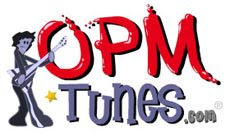HISTORY:
One of the first popular Filipino rock stars was Bobby Gonzales, whose major hit was "Hahabul-Habol." Eddie Mesa, another teen idol from the period, became known as the "Elvis Presley of the Philippines." Back then, many Filipinos referred to Rock bands as "combos," many of which used nontraditional instruments like floor-bass bongos, maracas, and gas tanks.
1960s
In the early 1960s, as electric instruments and new technology became available, instrumental American and British bands like The Shadows and The Ventures flourished. Filipino instrumental bands arose as well in this period; bands like The Deltas, The Celtics, RJ & the Riots, The Technicolors, The Downbeats, The Hi-Jacks, and The Electromaniacs. These bands spawned the first Filipino singer-songwriters.
In 1963, the so-called British Invasion brought bands like The Beatles to mainstream audiences worldwide. Their widespread popularity and their embrace of the counterculture injected the possibility of socio-political lyrics with mature comments on real life into popular music. Immensely influenced by this new breed of British artists, many Filipino bands began adopting similar musical styles.
1970s
Into the early 1970s, Filipino music was growing more nationalistic and socio-political in nature, as well as using Tagalog more often. Popular or Pop music still dominates the airwaves with artists such as the Apo Hiking Society and Hotdog. The songs like "Ang Miss Universe ng Buhay Ko" (The Miss Universe of My Life) of Hotdog combined Filipino and English words within the same song. This helped innovate the so-called "Manila Sound". OPM (Original Pilipino music) also became popular.

However, emerging social and political consciousness somehow creeped in to the industry with the traditional allied genres that are folk and rock music. Folk musicians included Freddie Aguilar, Asin, Florante. (In 1978, Freddie Aguilar's debut single, "Anak", became the most commercially successful Filipino recording in history. The song became known also in other Asian countries and in Europe). Perhaps Asin, a folk ethnic band, was the first commercial band to successfully bring a pro-environment song to the airwaves with "Masdan Mo Ang Kapaligiran". Also famous for providing subtle rebellious (anti-Marcos dictatorship sentiment was growing at that time) and peace messages behind its skillful vocal harmonizing. Asin gave the masses hits such as "Bayan Kong Sinilangan (Cotabato)", "Balita", and "Pagbabalik".
Juan Dela Cruz Band, a Garage Rock- and Blues Rock-influenced group consisting of guitarist Wally Gonzalez, bassist Mike Hanopol, and drummer Pepe Smith, are often credited for ushering in the first "rock & roll revolution" in the Philippines that lasted from the late '60s to the late '70s (also known as the Golden Age of Pinoy Rock). Considered by many to be the "grandfathers" of Pinoy Rock,[who?] they played a large role in re-awakening national pride through their bluesy Tagalog rock songs at a time of English-dominant music in the local scene. During a Woodstock-esque concert in Luneta Park, the group performed their original "Himig Natin" for the first time.
Being influenced by the counter culture, the bands of the 70's were known to have never been sidelined commercially and sometimes took the center stage by storm. The radio station DZRJ, particularly the AM weekend "Pinoy Rock and Rhythm" show hosted by ex Fine Arts student from PWU named Dante David a.k.a. Howlin' Dave, provided the much needed support and publicity to Pinoy Rock during this era.
Today, many music journalists refer to the works of these pioneering artists as Classic Pinoy Rock,[who?] perhaps to distinguish them from the works of relatively younger Pinoy Rock bands, especially those that emerged in the 1980s through the 1990s.
1980s
In the early up to mid-1980s, Pinoy Rock became the music of Filipino protesters. Gary Granada and the band Buklod had socially relevant lyrics for their songs. Aguilar's Bayan Ko (My Country) became an anthem during the 1986 EDSA Revolution. A subculture rejected this kind of socially aware lyrics.
The most popular Pinoy Rock band in the Philippines in the '80s was arguably The Dawn, whose early songs were largely influenced by New Wave and Post-punk, the dominant Alternative music genres in the Philippines during that period. The Dawn came to prominence in 1986, when its independently released single "Enveloped Ideas" became an instant favorite among listeners of DWXB-FM 102.7, a now-defunct FM radio station popular in the mid-'80s that heavily played New Wave, Post-Punk, and similar genres.
Many music journalists and enthusiasts, as well as musicians themselves, attribute the flourishing in the mid-'80s of New Wave- and Post-Punk-influenced bands to DWXB-FM, which began playing independently released singles of unsigned local bands. This helped many of the struggling bands in this era to achieve cult status. These bands included Dean's December, Ethnic Faces, Identity Crisis, and Violent Playground, all of which were able to record and release their respective albums in the years that followed.
Other Pinoy Rock groups took their cue from these pioneers and started recording their own songs; and this proved beneficial to the Pinoy Rock scene, which brought back creativity and originality to the awareness of fledgling musicians. Among the lot, The Dawn, Afterimage (band), and Introvoys proved to be the enduring and more successful. Each was able to sustain a relatively long career.
DWXB-FM went off the air on June 9, 1987. The new Cory Aquino-led government began sequestering properties owned by her predecessor Ferdinand Marcos and his cronies, including the home that DWXB-FM beamed from. DWXB-FM was revived as an online radio station on September 10, 2005, by Sutton Records, with the original DJs broadcasting from Manila.
1990s
Introvoys and After Image were among the prominent bands in the early 1990s; but their popularity were later overshadowed by younger bands that eventually emerged. Radio station LA 105.9 had advocated Filipino rock music, encouraging original amateur (even if poorly recorded) singles and gave new avenues for emerging bands.
The commercial success of Eraserheads paved the way for more Pinoy Rock acts getting signed in major labels and gaining more exposure. These bands adopted a variety of influences both in image and music; many fell under a particular genre; however, crossing over of styles is most often inevitable.
The 90's also introduced OPM into the international spotlight, as Eraserheads won the MTV Video Music Award for Best Music Video and spawned the internationally released album.
-----------------------------------------------------------
NOTE !
Kindly place news on the underground community, which by afar everyone knows contributed alot in this era. where is the significant metal.goth.punk bands and events of this era? not everyone followed commercial pop bands like the aforementioned above. lets be fair people.
[edit] 2000s
In the early 2000s, Hip hop, reggae, acoustic, and R&B-influenced bands dominated the Philippine music scene, causing Pinoy Rock to take a backseat. Only a number of Pinoy Rock bands had managed to stay in the mainstream during this period. In 2003 a not so well known home-educated DJ started playing in a small bar and restaurant known as GWEILOS, DJ RO helped promote the club every Monday night while there was an emergence of Filipino Rock Bands like Bamboo, Orange and Lemons and Kitchie Nadal that only started performing in Gweilos and eventually became popular. In 2004, Pinoy Rock once again gained prominence, with the rise of yet another wave of Filipino Rock bands. During this time, the Pinoy Rock music scene in Cebu had exposure.
2001 saw indie band The Pin-Up Girls, made up of former Keltscross members and underground musicians, signing to Know-It-All Records in Tacoma, Washington, making them the first Manila-based band to sign with an international label. This development caused quite a negative reaction from the Manila rock scene as most musicians deemed the band unworthy of such acclaim.
The Pin-Up Girls released an EP worldwide called "Taste Test" that sold out. Know-It-All then printed a new batch dubbed "Taste Test: The Expanded Menu". The lead-off single "Caress" hit number one on the New Jersey/Internet-based radio www.flashbackalternatives.com.
2004 also saw the emergence of the first Philippine virtual band, Mistula [1]. With the internet as their stage, Mistula comes alive through their official website, a fusion of music, graphic art, literature, photography and other art forms.
2005 further ushered in the mainstream buzz on Pinoy Rock, and along with it bands that leaned more towards pop sensibilities. During this time, Pinoy Rock, more than ever, gained mainstream exposure.





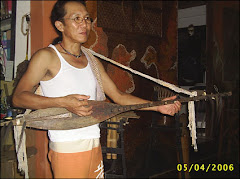
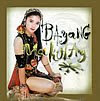



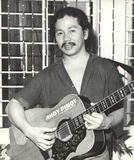

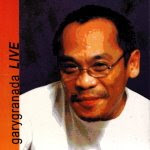
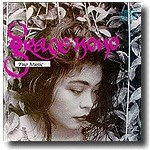









.jpg)


